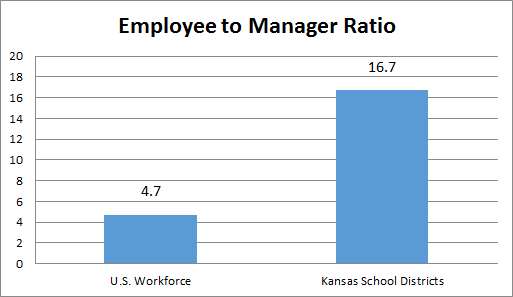A new report from the Kansas State Department of Education shows school district ending balances for operating funds increased $50 million over last year. Why would district balances increase at a time many school leaders believe they are being underfunded? In other words, why put more money in the bank if you believe you aren’t able to spend enough on student programs, teacher salaries and other needs?
A closer look shows that school district cash reserves are reasonable for the state’s fiscal condition and other factors. Here are eight facts about district cash balances or reserves.
First, delayed state aid payments distort actual cash balances.
It’s important to recognize that the July 1 ending balance report is inflated every year because of delayed state aid payments. Since 2003, the state of Kansas has regularly delayed paying a portion of the final state aid installment of the fiscal year ending June 30 until some time in July.
By law, school districts are required to account for the money as having been received in June, but do not actually get the money until sometime in early July. That means the July 1 ending balance report is always inflated, usually by around $200 million. Last June (2015), the delay was $193 million.
This June (2016), with state tax revenues running far behind expectations, the delayed payment was increased to $260 million. Therefore, while the July 1 balances in district operating funds are about $50 million more than last year, the amount of money delayed (and not yet actually received by districts on July 1) is $75 million more than the previous year.
Second, some districts increased reserves in June because of fear that districts would not receive funding in July.
This June was a unique situation as Kansas school faced a possible shut-down order due to the Gannon school finance case. Without timely action by the Legislature, funding after July 1 could have been blocked by the Supreme Court. Districts may have delayed expenditures that normally fall in June or added to reserves to try to fund essential maintenance services during a shut-down.
Third, a big part of operating reserves really aren’t for regular operations.
Total school operating fund reserves, which exclude funds for capital outlay, bond payments and small revenues from certain local mill levies, are $920.9 million this year. However, that amount does include $242.3 million in funds restricted from general operating purposes.
These funds include $24.4 million in federal funds, which must be spent on specific purposes; $35.5 million in gifts and grants, which are usually restricted by the donor, such as for scholarships; $117.9 million for district insurance reserves; and $64 million for textbook and material purchases. Almost one-third of the $75 million increase was in federal funds, in part due to a change in the schedule of federal impact aid.
Fourth, cash balances are appropriate for the state’s financial climate.
When these restricted funds are subtracted, the remaining balance of about $680 million equals approximately 16 percent of school district operating budgets (general fund, local option budgets and special education state aid), or about two month’s operating costs, or about 1 percent more than last year.
The Legislature’s own efficiency report from last session cites the Government Finance Officers Association (GFOA) recommendation that school districts maintain a balance of between 10 percent and 15 percent for “low to moderate risk” conditions; between 15 percent and 25 percent for “moderate to high risk;” and greater than 25 percent for “high risk.” On average, Kansas school boards - who approved budgets that include cash reserves - appear to believe the Kansas fiscal situation is at least “moderately” risky, given years of revenue shortfalls, credit downgrades, budget reductions and disappearing ending balances.
Cash reserves were slightly over 10 percent in 2006; increased to about 18 percent during and following the Great Recession; and have been declining since 2012 - until this year.
Fifth, many school leaders believe the state fiscal situation is at a higher level of risk.
The additional $75 million in payments was delayed to avoid a state general fund deficit. That comes on top of nearly $100 million in delayed school district aid for the Kansas Public Employees Retirement System. The state general fund has essentially no projected reserves. Some districts added to their reserves in anticipation of possible state funding cuts during the current school year if state tax revenues continue to lag.
Sixth, school district bond ratings are based in part on district reserves.
District bond advisers encourage districts to keep balances at levels recommended for financial, rather than political, reasons, which saves local and state taxpayers interest costs.
Seventh, district balances are high in July to provide cash flow for the rest of the year.
School district revenues and expenditures do not happen in tandem. For example, school districts had almost $200 million in special education balances last July 1, but that dropped below $60 million by March as special education costs outpaced special education state aid.
Eighth, like school districts, the State of Kansas cannot operate with reserves.
Although the state of Kansas frequently ignores its own 7.5 percent ending balance requirement for the state general fund, it is forced to borrow from other state funds through “certificates of indebtedness” to manage its own cash flow needs. The combination of ending balance and internal borrowing since 2007 has consistently been around 15 percent or higher.
The state’s borrowing would need to be even higher if not for the $200 million or more delay in school district aid payments. In other words, school district reserves help the state manage its own cash flow.
As these reasons explain, school district cash balances are determined by a number of factors, but there are rational, fiscally sound reasons for the way districts have been managing them.

